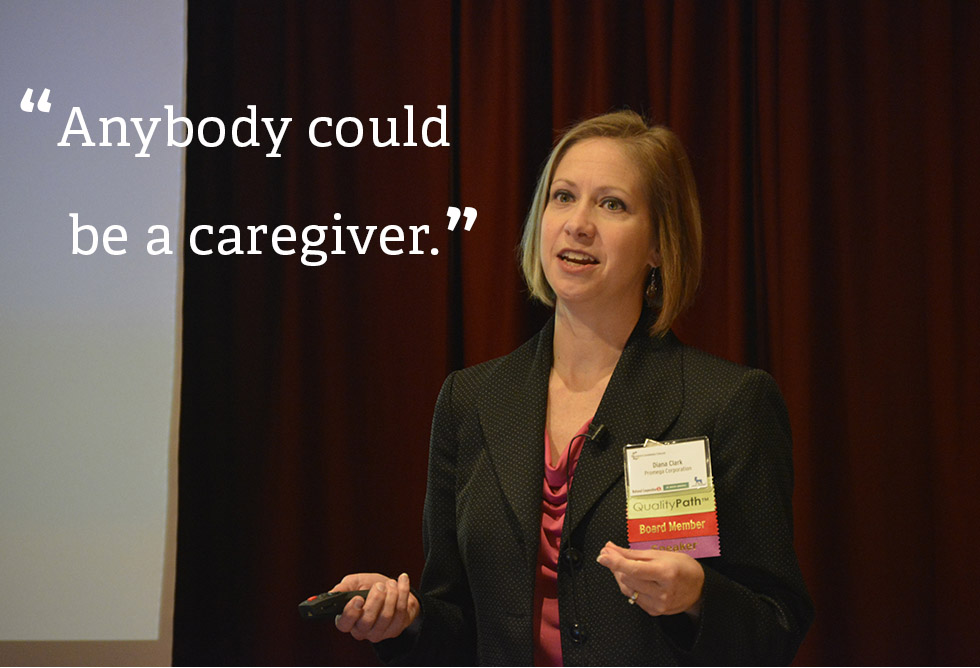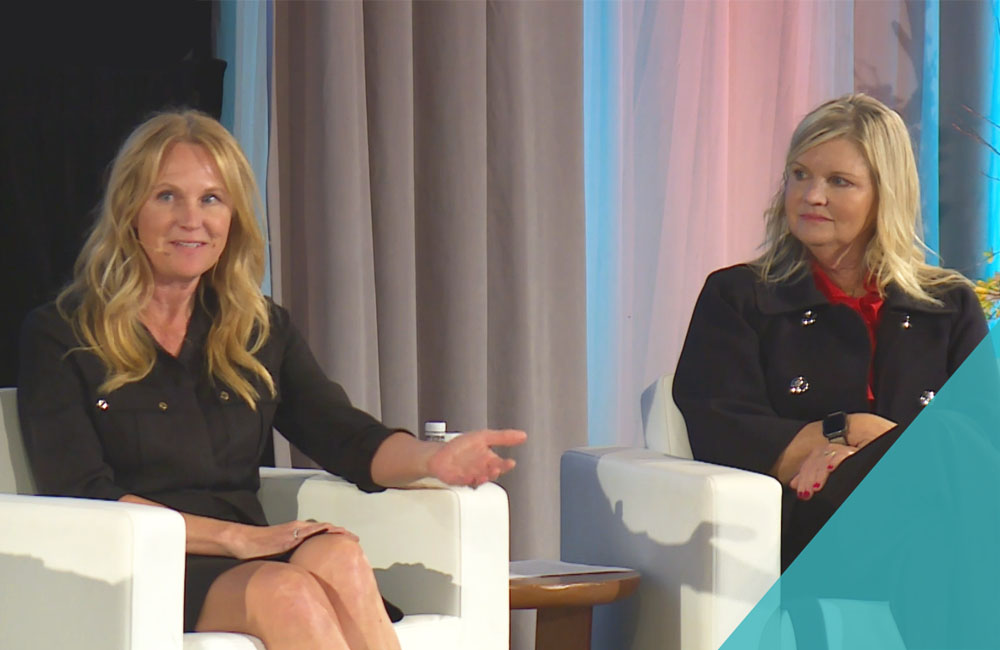
Caregiving Benefits: Resources and Tips for Employers
How can an employer start the conversation with their workforce about work-life balance and promote caregiving benefits?
Employees and employers rarely discuss the caregiving responsibilities at home that can affect their performance at work. Yet, one out of every six U.S. employees is an informal caregiver outside of the workplace for a family member or friend.
Promega Benefits Manager Diana Clark recommended to “. . . normalize the conversation.”
The Alliance held a “Wellness & Caregiving Benefits” event to spark a conversation with employers to discuss available resources and best practices for offering caregiving benefits to employees.
Caregiver Demographics and Changing Needs
“The current number of people age 65 or older is larger than at any time in history and we expect this to grow,” said Sam Wilson, state director of AARP Wisconsin. “We need to be prepared to meet their needs.”
America is aging. In 2013, approximately 40 million family caregivers in the United States provided an estimated 37 billion hours of care. The estimated value of their unpaid service was approximately $470 billion.
Many caregivers are in the 45 to 64 year-old age group. The ratio of people in this age group to people over the age of 80 was 7-to-1 in 2010.
“Demographics are shifting and projections show that on average, there will be less caregivers per aging adult. That ratio is projected to be 4-to-1 by 2030 and 3-to-1 by 2050,” said Wilson.
In recent decades, multi-generational households have become less common. However, geographic distances between seniors and their caregivers are increasing.
How Can the Working Caregiver Juggle It All?
Nearly 17 percent of today’s workforce in the United States provides some level of care for a family member or friend.
Caregiving often takes different forms for each individual’s situation. However, common caregiving activities often include:
- Transportation
· Grocery or other shopping
· Housework
· Preparing meals
· Managing finances
· Giving medications
“Many caregivers are sandwiched between parents and children and provide financial support for both,” said Wilson. “Caregivers often hesitate to ask for help.”
Employers are affected if the added job of caring for a relative or friend distracts employees in the workplace. The added stress from caregiving can also take a toll on a caregiver’s finances, wellbeing and physical health.
Employers can help reduce this stress and assist their employees in maintaining work-life balance. This may mean offering more resources, flexible schedules and wellness benefits to care for employees’ wellbeing.
Change the Conversation, Be Proactive
Scot Cheben, co-founder at Senior Providers Network, pointed out that as a society, Americans are often reactive. But what if we changed the conversation? What if employers were proactive in offering resources and caregiving benefits before their employees needed them?
“50 percent of caregivers hide their caregiving responsibilities. Be proactive,” said Cheben.
Cheben also recommended caregivers to be proactive in their conversations with senior family members. “Approach the conversation with an attitude of listening, not telling. Be very straightforward with the facts,” said Cheben.
Resources for Employers
AARP (formerly known as the American Association of Retired Persons) connects employers with other employers, subject matter experts and community resources.
“We provide free resources for employers and caregivers,” said Wilson.
A caregiving resource guide with national and state-specific resources is available online through AARP’s website at www.aarp.com/caregiving.
Event attendees also received a 56-page booklet from AARP entitled, “Supporting Caregivers in the Workplace: A Practical Guide for Employers.” Download your copy here.
Caregiving Benefits: An Employer Perspective
During the event, speakers recommended that employers review and revise their employee benefits to accommodate caregiving benefits.
Promega, a global biotech company headquartered in Fitchburg, Wis., identified a broader caregiving need in their employee population. Clark said this resulted in the creation of a caregiving leave policy that covered more than just parental leave for the birth of a child. In addition to being benefits manager at Promega, Clark is also a member of The Alliance Board of Directors.
Promega’s caregiver leave policy was implemented on Jan. 1, 2018. This policy:
- Was defined as paid time off (up to 80 hours) for an employee that is providing supportive care to an immediate family member with a serious medical condition.
- Can apply to parents with newborns, caring for a spouse/partner that is permanently or temporarily incapable of caring for themselves or caring for aging parents.
“During 2018, 120 employees (approximately 12 percent of Promega’s U.S.-based population) requested caregiver leave time,” said Clark.
The top three reasons Promega employees cited for requesting caregiver leave were:
- Caring for an aging or seriously ill parent.
- Bonding with a new child. (Leave time was available whether the child was a newborn, fostered or adopted.)
- Caring for a child or spouse with a serious health condition.
Clark also noted that Promega saw an increase in paternity leave requests within the past year.
Caregiving Leave Evolution
In 2019 the policy widened to include social service resources, organizations that specialize in aging and disabilities, support networks for caregivers and onsite workplace counseling services.
Caregivers are often a hidden population among employees. But how can an employer assist employees to seek the help they need?
Clark recommended that employers normalize the conversation with employees about caregiving needs, before they need them.
“Anybody could be a caregiver,” said Clark.







